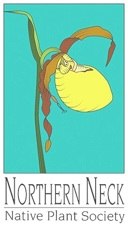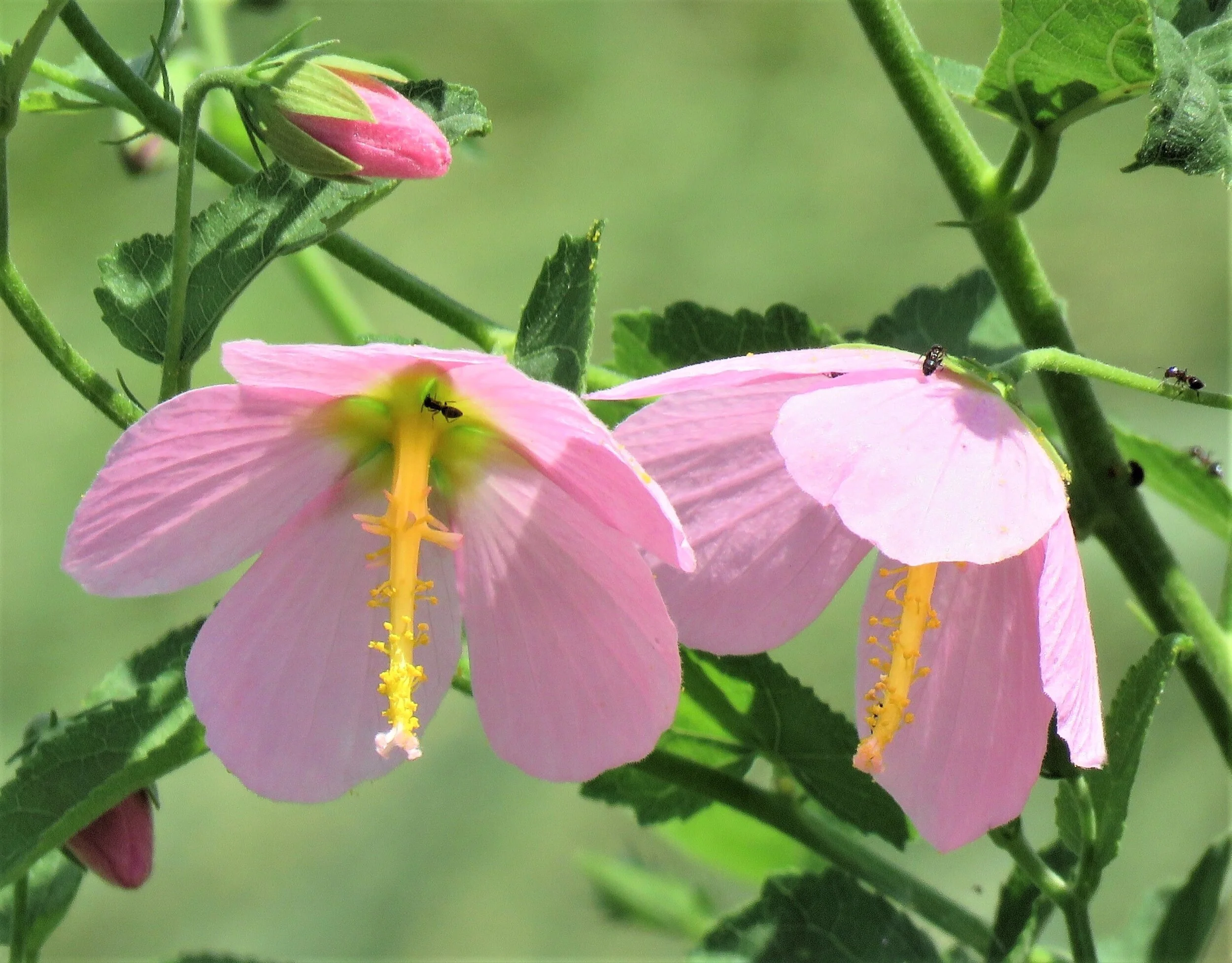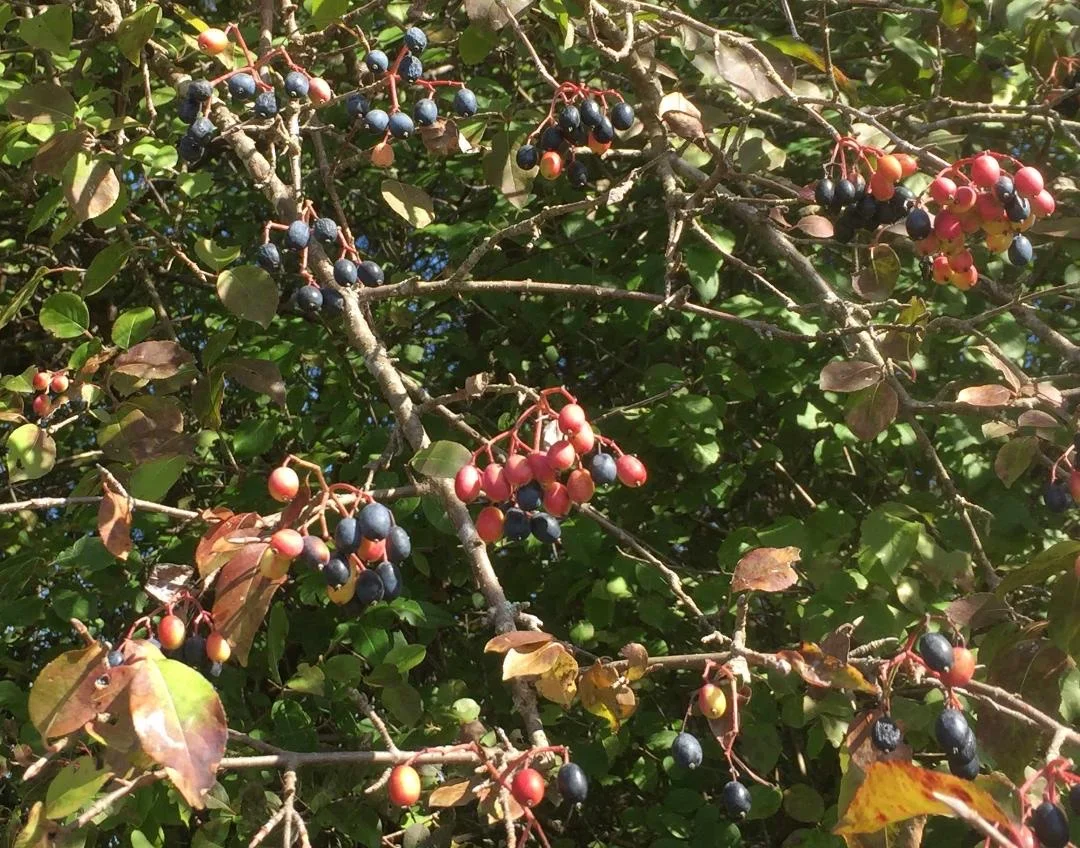American Beeches are one of our most magnificent native trees, beautiful in every season, especially winter. They are also one of the most easily recognized of our eastern deciduous trees, with their silvery gray bark that appears “cast from molten pewter”. The massive trunks appear smooth to the eye but are slightly rough to touch and sometimes likened to elephant hide. American Beeches are slow growing but reach heights of 60 – 80’ and are known to grow as tall as 120’. This tree has massive smooth trunks with fluted bases that give way to a tracery of fine silvery branches accented with rich brown narrow pointed buds. Oval leaves alternate down the fine branches and are lined with small regular teeth along the margins and distinctive parallel veins on either side of the mid-rib. The lustrous leaves are almost translucent when held up to the sun, casting a dappled light under the trees. The leaves emerge a glowing chartreuse in spring, and light up the woodlands once again in fall when they turn a rich copper which glows against the silvery gray trunks. In winter, some of the leaves curl and fade to a light parchment color and hang on the branches, especially on younger trees and on lower branches of older trees, creating a lovely contrast with the gray trunks and surrounding forest.
Read MoreAs the winter solstice approaches, I am already anticipating the blooms of our earliest spring wildflower, Skunk Cabbage, Symplocarpus foetidus. The buds of this winter blooming wildflower begin to appear in our region as early as December and the flowers often start to bloom by New Year’s Day. As one might imagine for a wildflower that manages to bloom and attract pollinators in the dead of winter, this plant has developed some remarkably interesting adaptations to the cold and even snow cover.
Read MoreAs the winter solstice approaches, I am already anticipating the blooms of our earliest spring wildflower, Skunk Cabbage, Symplocarpus foetidus. The buds of this winter blooming wildflower begin to appear in our region as early as December and the flowers often start to bloom by New Year’s Day. As one might imagine for a wildflower that manages to bloom and attract pollinators in the dead of winter, this plant has developed some remarkably interesting adaptations to the cold and even snow cover.
Read MoreEvery fall as the leaves begin to drop and little else dares to bloom, I look forward to the blooms of our Common Witch Hazel, Hamamelis virginiana, a lovely small deciduous understory tree that flaunts clusters of spidery yellow blooms along its bare branches.
Read MoreRed Chokeberry, Aronia arbutifolia, is a versatile landscape shrub that shines in all four seasons of the year.
Read MoreThe Viburnums are a wonderful group of native landscape shrubs with multiple seasons of interest. Arrow-wood, Viburnum dentatum, is a standout among them and is native to the Coastal Plain of Virginia including all of the Northern Neck, where it is found in moist floodplain forests, wet flatwoods, seepage swamps and even tidal and alluvial swamps. Despite its affinity for moist soils, it can also be found in dry upland woods.
Read MoreSeashore Mallow goes by many fitting names - Virginia Saltmarsh Mallow, Coastal Mallow, or Virginia Fen-Rose – but no matter what name this lovely coastal plant goes by, it puts on a dazzling show in late summer and fall that will make you fall in love!
Read MoreDriving along sandy roadsides and fields of the coastal plain in summer, it is always a delight to find our native Purple Passionflower, a deciduous vine with dark green, three-lobed leaves and exquisite, showy flowers and edible fruit. This vigorous vine is native to the southeastern US from Kansas to Pennsylvania and southward and to Florida and Texas. In Virginia, it is most common in the southeastern coastal plain and outer Piedmont. Occurring in both Lancaster and Northumberland Counties, it is one of the hardiest Passionflower species.
Read MoreServiceberries are one of our loveliest small native trees with multiple seasons of ornamental interest. In the Northern Neck, we have several species found in our area in a range of sizes to fit any garden. Amelanchier arborea, the Downy Serviceberry, is also called Juneberry, Shadblow and Shadbush among other names and is one of the most beautiful and common species.
Read MoreThe lovely Sweetbay Magnolia, Magnolia virginiana, goes by many common names, including Sweet Magnolia, Swamp Magnolia, Swamp Bay, Laurel, White Magnolia, and Beaver Tree to name just a few. Regardless of the name, it is a spectacular small tree in every season and we are lucky it is a common understory tree along coastal areas of the Northern Neck.
Read MoreFound from New York to Georgia, these graceful deciduous shrubs flaunt eye-catching clusters of tubular rosy pink flowers at the tips of their branches. The shrub is sometimes called Wild Honeysuckle because of the trumpet shaped flowers with deep rosy red floral tubes flaring out into five lighter pink petals, all crowned by long curving rosy stamens that protrude out beyond the petals, resembling honeysuckle blooms.
Read MoreThe White Oak, Quercus alba, is one of our most stately, magnificent native trees, and one of our longest-lived. Specimens have been documented to be over 450 years old - already mature before the birth of our country. White Oaks are probably the most common and widespread oak in Virginia and are one of the most adaptable, able to grow in a wide variety of habitats from dry upland forests and ridges to moist slopes and well drained bottomlands and swamp margins.
Read MoreThe American Holly, Ilex opaca, is one our few broad-leaf evergreen trees in the Northern Neck and is a fabulous landscape plant for our gardens. They have long been a symbol of renewal and life during the depths of winter. Hollies light up the gray and brown winter landscape of our coastal woodlands with their lustrous green leaves that catch the winter light, and scarlet berries.
Read MoreViburnums are attractive and adaptable native shrubs with plenty of landscape interest throughout the year from showy spring flowers, to colorful fruit and fall foliage. Of the 11 species native to Virginia, the stunning Possum-haw or Southern Wild Raisin (Viburnum nudum) is perhaps our loveliest.
Read MoreOf the many garden-worthy goldenrods, our beautiful local Seaside Goldenrod, Solidago sempervirens is a standout.
Read MoreViburnums are beautiful native shrubs or small trees with 11 species native to Virginia and four native to the Northern Neck. All are wonderful but the native Blackhaw (Viburnum prunifolium) stands out on all counts, with its multi-season landscape interest from showy flowers to conspicuous fall fruit.
Read MoreSeveral of our native Lobelias are well loved and absolutely beautiful. Cardinal Flower with its brilliant red flower spikes, and Great Blue Lobelia with its crowded spires of deep blue flowers, are familiar to many gardeners. Downy Lobelia (Lobelia puberula), which is less well-known, graces roadside ditches, low and upland woods, riverbanks and other boggy or damp areas.
Read MoreSwamp Rose-mallow (Hibiscus moscheutos), also known as Eastern or Crimson-eyed Rose-mallow and one of our showiest native wetland plants, is in full bloom right now. It is found in both freshwater and tidal marshes along our rivers and creeks, open marshes and other damp areas.
Read More




